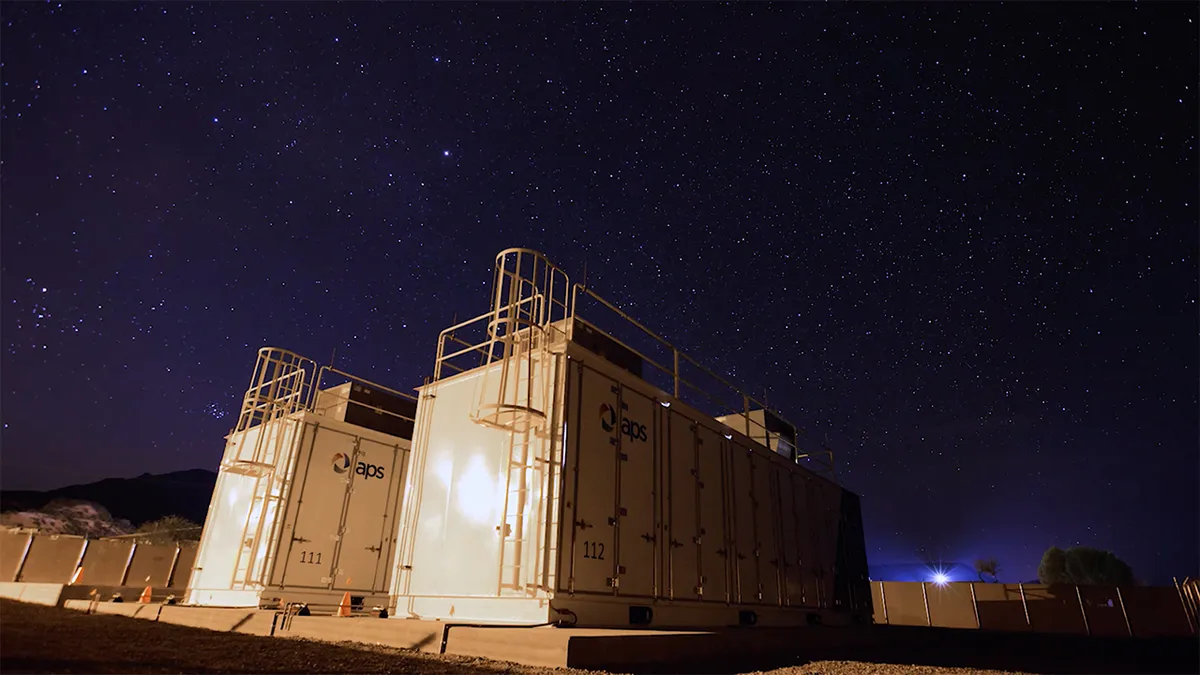Energy storage will be a big beneficiary of the federal Inflation Reduction Act, but shortages in materials used to manufacture batteries could plague construction for several years, an analyst said.
The law signed by President Joe Biden in August targets federal funding of $369 billion, primarily as tax credits for clean energy projects and is expected to draw private capital and boost domestic manufacturing. How much money will ultimately be available to spur and subsidize battery storage project development is not known because tax credits will be claimed by businesses and individuals in the coming years
Federal spending is “likely double the headline figure” in the IRA, according to an analysis by Credit Suisse. And with subsidized financing and a multiplier impact from federal grants and loans, public and private financing of U.S. clean energy could reach about $1.7 trillion over 10 years, according to the analysis.
“We see most of the upside coming from solar, wind, battery deployment and manufacturing, clean hydrogen and carbon capture, the Sept. 28 report said.
Capital invested in stationary energy storage “is going to be massive over the next few years primarily because of the IRA,” said Sam Jaffe, vice president of battery solutions at E Source.
Scott Childers, vice president at the Essential Power division of Stryten Energy, said the IRA and Infrastructure Investment and Jobs Act signed by Biden in November 2021 are drawing private investment. Both measures work “fairly well,” he said. The infrastructure measure pays to install demonstration batteries and the IRA will more likely help pay for battery manufacturing, he said.
The infrastructure measure is pumping more than $1 trillion into public works construction and upgrades of bridges, highways and airports and is funding clean energy projects, such as electric vehicle charging stations.
“It’s all about risk,” Childers said. “Certainly both of these bills are contributing significantly to reducing that risk and advancing the investment stakes. There's the investment there that we don't have to bear.”
Shortages in materials expected for the next three years
Jaffe said supply shortages are affecting materials such as lithium, copper foil and graphite used in the manufacture of batteries. To meet demand, significant investments are being made in building mines, refineries and factories, Jaffe said.
“It's just not happening fast enough,” he said.
Shortages should be expected for the next three years, making it difficult to order batteries for delivery at the end of this year or in 2023, Jaffe said.
John Godfrey, senior government relations director at the American Public Power Association, said with the two large federal spending bills, “you’re really, really super-heating the supply chain.”
Storage and clean energy’s ‘Achilles heel’
Storage provides a backup for intermittent clean energy.
“Everything has a potential Achilles heel,” he said. “Coal piles freeze. Wind turbines don’t spin when there's no wind and solar doesn’t work when it's cloudy.
“Everything's got a hiccup to it,” Godfrey said. “Having all of those available is better than relying on just one. Storage is another arrow in that quiver.”
The U.S. has robust battery manufacturing, but the major manufacturers are Chinese, Japanese and Korean, including CATL, Panasonic and LG Energy Solution that have been willing to sacrifice margin to broaden their market share, Jaffe said.
In contrast, U.S. businesses are averse to losing money “for 10 years in hopes that eventually you’ll have a big business,” he said.
The flow of money from the IRA will provide incentives needed to encourage U.S. manufacturers to expand the domestic industry as U.S. transportation and electric generation increasingly rely on battery technology, Jaffe said.
Michael Conway, senior director of business development for energy storage at New Leaf Energy, said many provisions in the IRA were part of the Build Back Better legislation that failed in Congress last year. Certain incentives had a potential impact on clean energy businesses, he said.
Extending the investment tax credit tapped into a policy most responsible for renewable energy development “and just doubled down on it,” said Jessica Robertson, director of policy and business development for New England at New Leaf Energy.















